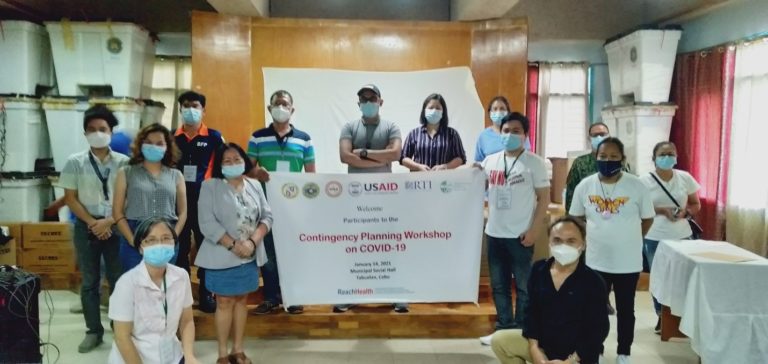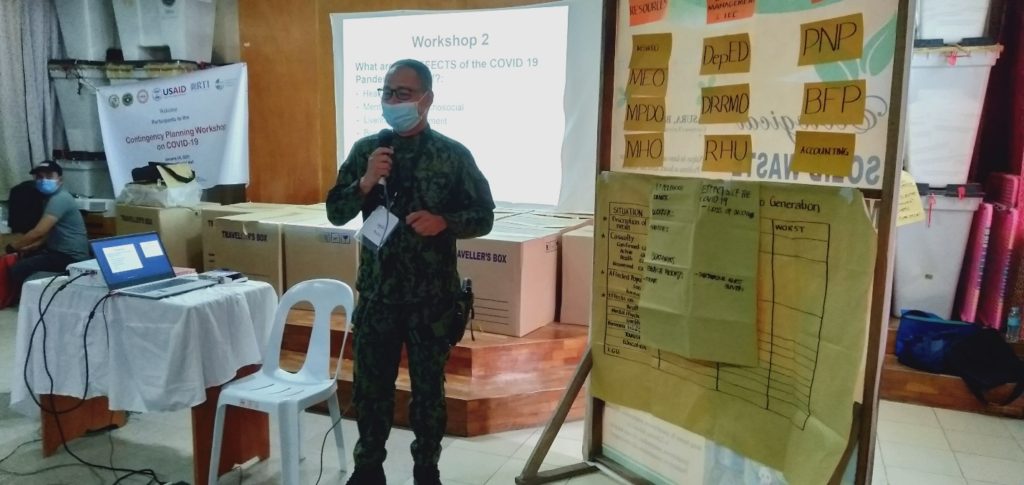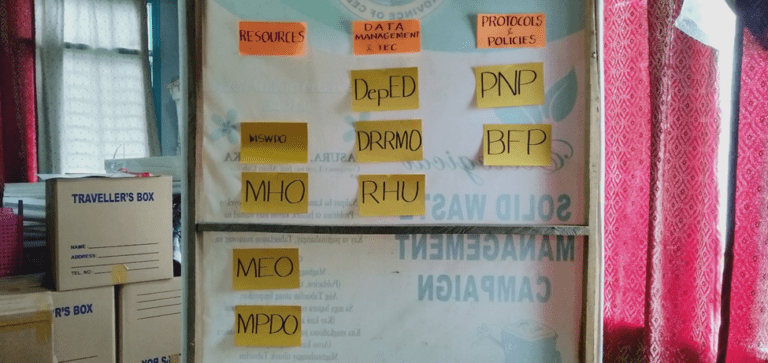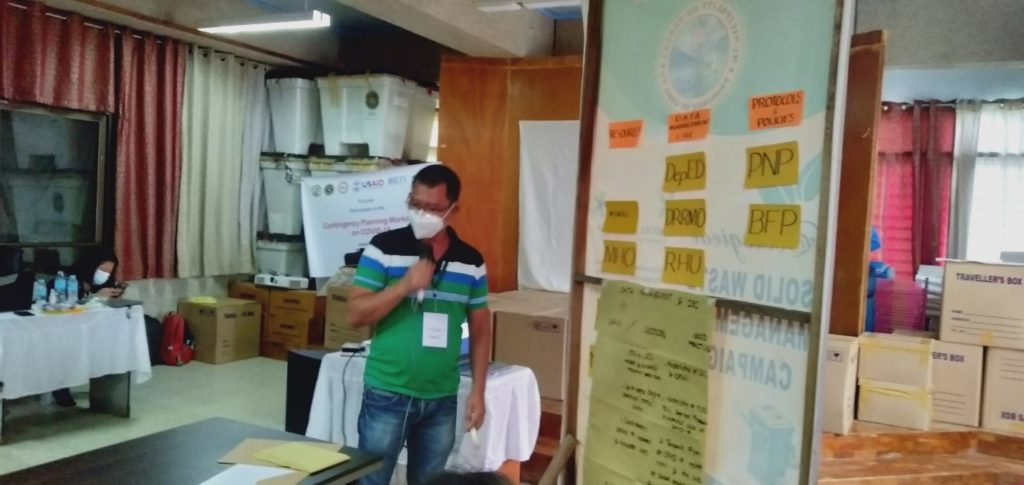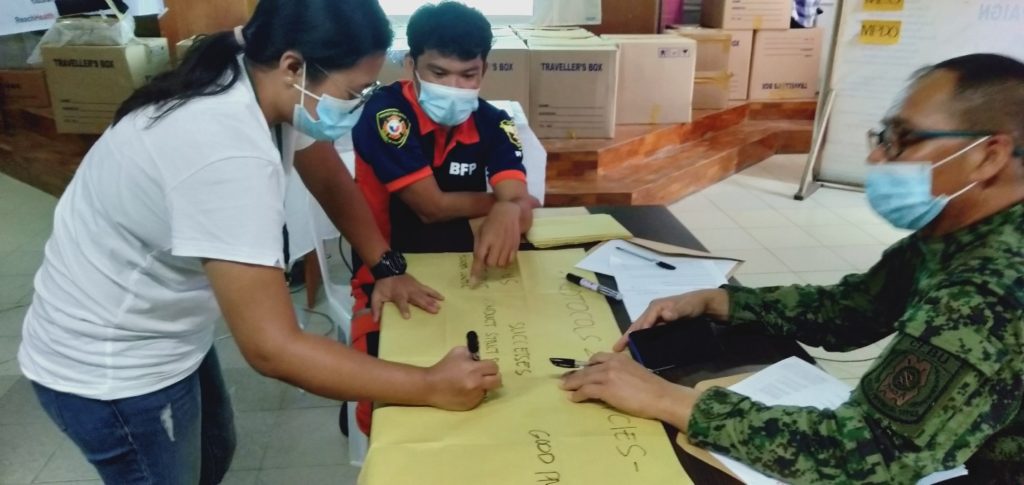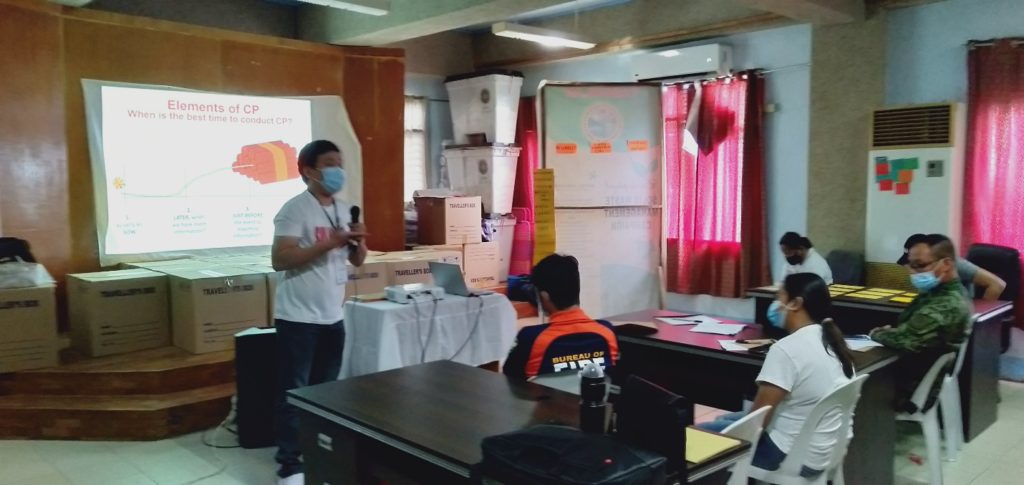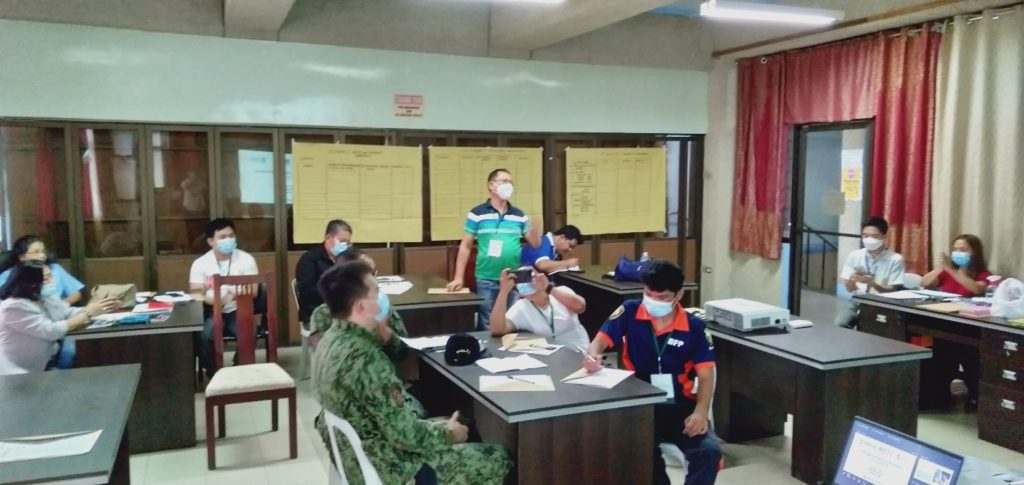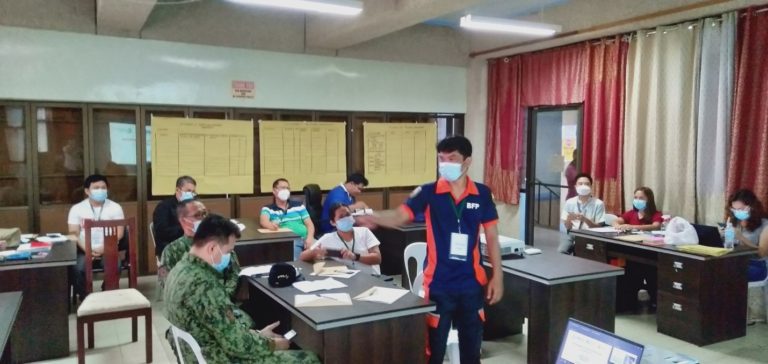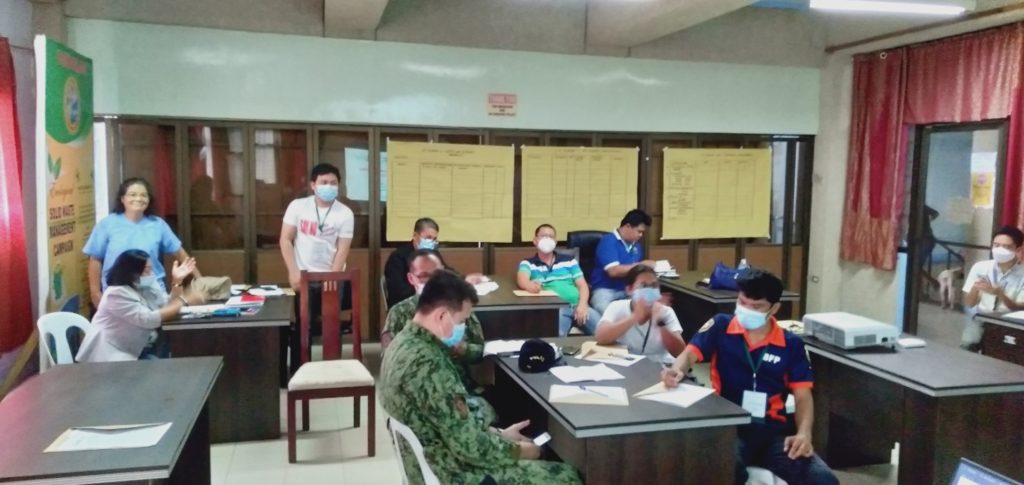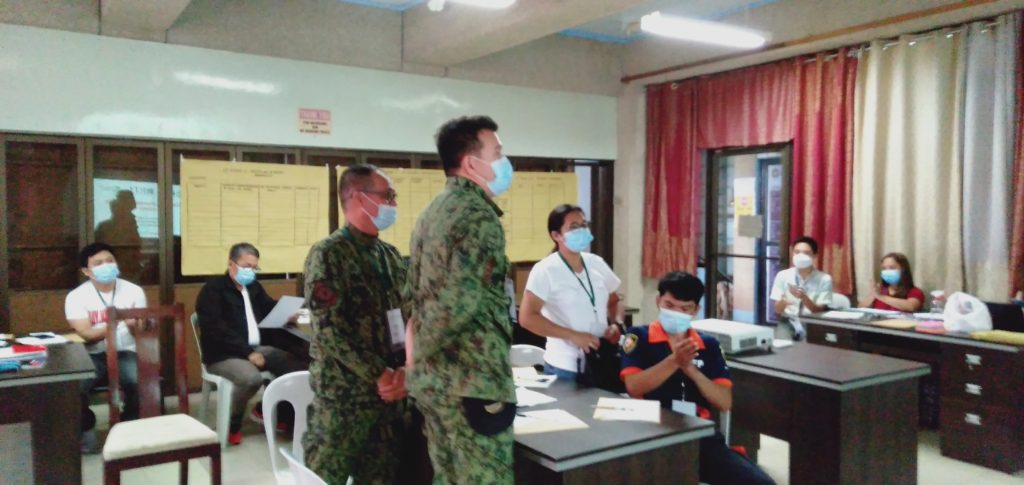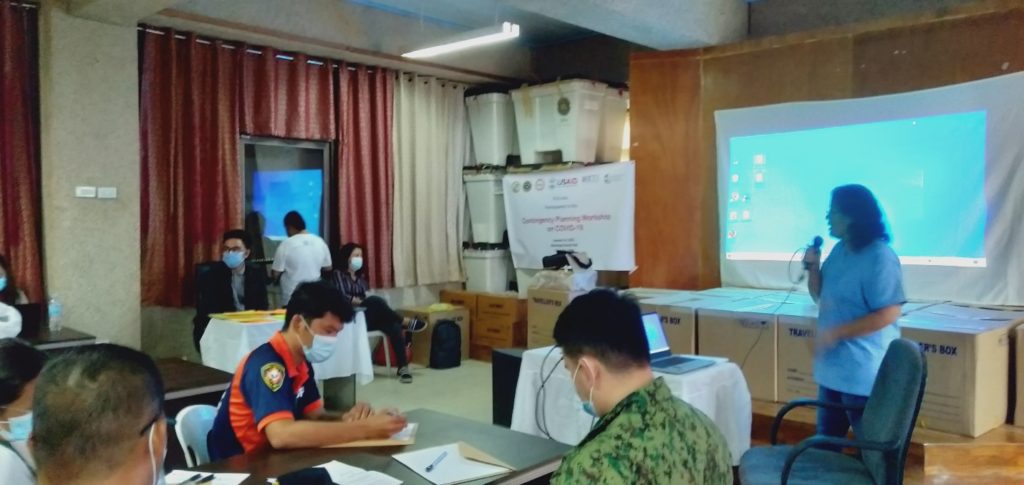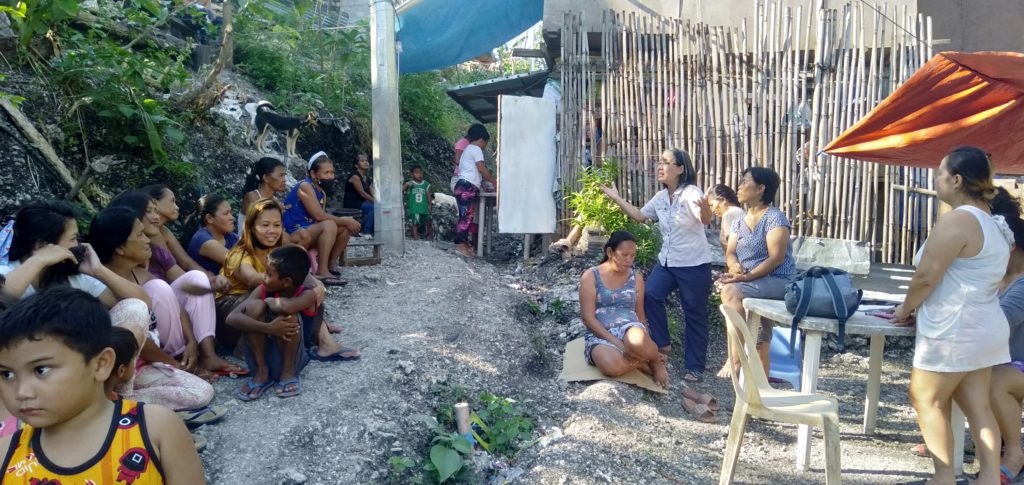A contingency planning on COVID -19 was held with government officials of Tabuelan on January 14, 2021 at the municipal social hall.
There was a total of 13 participants. They came from the following agencies or offices, namely: Philippine National Police, Rural Health Unit, Department of Education, Bureau of Fire Protection, Municipal Disaster Risk Reduction and Management Office, Engineering Department, Accounting Office and Budget Office.
As COVID-19 is an epidemic and a serious health problem, a contingency plan for it should be made. It had been nine months since the first local case was reported in the Philippines and breakthroughs in describing it, controlling it and mitigating its effects have been achieved in great strides and unprecedented ways. Statistics show that in Tabuelan, there had been less than 30 cases since the lockdown. However, there was still the possibility that there could be a sudden surge in the number of cases of COVID-19 in a barangay or in the municipality in the future.
The workshop opened with an invocation, national anthem and opening remarks by Tabuelan RHU Public Health Nurse Gerra Lahaylahay.
The participants were then introduced by the emcee project team leader Edgar E. Gahisan. Dr. Erlinda Posadas then gave an overview of the project implemented by the VPHCS citing the various activities on “delay, contain and mitigate the effects of the pandemic” since August 2020 until the present.
Project team Irish Grace Ramirez then introduced the workshop’s facilitators who are from the Cebu Provincial Disaster Risk Reduction and Management Office (PDRRMO). They include Rhee S. Telen, Jr. and Emily N. Lagrimas, and Josephine Aves.
Ms. Lagrimas who thoroughly defined contingency planning, its background, laws related to it, meaning of contingency plan, where to apply contingency planning, benefits of contingency planning and the need for contingency planning for COVID-19.
RHU Nurse Darius Bondoc then gave an overview of the COVD-19 situation. He said that since the first case was reported, there has been only 23 cases, 11 of whom were asymptomatic and 11 were mild and one died due to other causes. They had an expanded swab testing of frontliners and local officials, of whom two barangay health workers (BHWs) and two tanods were positive. Through the USAID project, BHERTs had trainings on COVID-19 response. With the Municipal Disaster Planning and Development Office, there was also monitoring of overseas Filipino workers returning home The Philippine National Police were also involved in border control and taking charge of violators of the protocols. The PNP were also involved in the transport of locally stranded individuals returning from Negros. He also pointed out that the municipality does not have a temporary treatment and monitoring facility (TTMF) but they have already identify a place for it, and has coordinated with the Department of Health for its construction. The municipality has Barangay Isolation Units each of which has a two to four bed capacity. The rural health unit shall then work to have the TTMF accredited with the DOH and the PhilHealth.
The first workshop followed the talk of Mr. Bondoc. The participants were grouped into five clusters, namely: a. Resources, b. Manpower and Logistics, c. Budget, d. Data Management and Information/Education, and e. Protocols and Policies. Representatives from different LGU offices formed each cluster. The groups were asked to write down the gains, successes and best practices of the municipality’s management and response of COVID-19.
Each group then had a representative who presented the results of the workshop written in Manila paper in the plenary session. Their answers were then synthesized by Mr. Telen.
The second workshop was on the effects of the COVID-19 on the following aspects, namely: a. Health/mental health, b. Livelihood/ employment, c. Information/education and family, d. LGU. There was one group who answered each aspect. Representatives of each group then presented the results of the workshops in Manila paper in the plenary session.
This was followed by a plenary session facilitated by Ms. Lagrimas where different clusters were formed, namely: a. food and non-food, logistics, health, education, Camp Coordination and Camp Management (CCCM), law and order, and management of the dead and missing. Different agencies were identified which would belong to each cluster.
The third workshop followed. Each cluster met and filled up contingency plan Form 6 on Needs and Activities Inventory, and Form 7 on Resources Inventory. In Form 6, the needs that are seen as gaps are identified, with the corresponding activities to meet those needs, the responsible agencies or offices involved in meeting those needs, and the time frame needed to meet those needs. In Form 7, what are identified are the specific resources that are needed to meet those needs, the quantity, unit of such resources, the agencies in charge of procuring those resources, the resource location, and the budget.
The entire proceedings were then synthesized by Ms. Lagrimas. She pointed out that the answers of the workshops will serve as inputs to making the contingency plan. The needs that were identified in the third workshop will be addressed in terms of provision of resources to meet these needs with the proper budget to be determined by the LGU to fund such resources.
She recommended that concerned LGU officials will meet again to draft the contingency plan. She recommended that since the rural health unit is the incident command team of the COVID-19 response, it will take charge of seeing to it that this is done. Ms. Lahaylahay agreed to do so. Dr. Erlinda Posadas then stood up that the VPHCS will provide the proceedings of the contingency planning which will be needed to come up with the contingency plan, which will then be presented to the Sangguniang Panglungsod then later to the Municipal Mayor, for approval. Ms. Lagrimas said that the PDRRMO will assist them in making the contingency plan.
